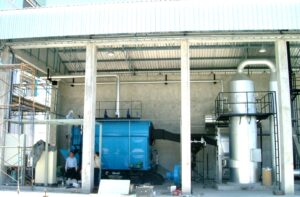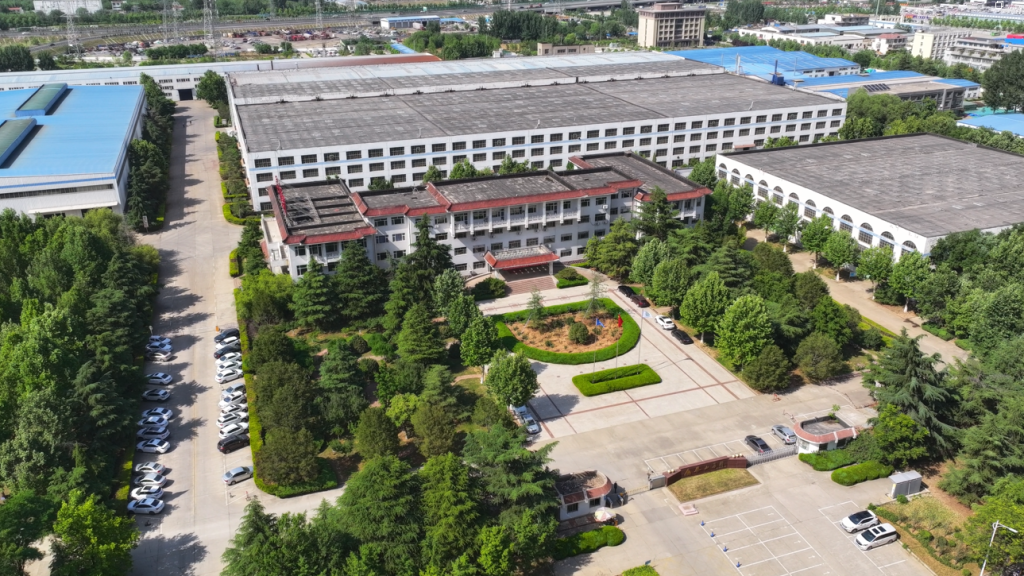Coal-fired boilers have been a cornerstone of industrial heat and power generation for decades. However, many businesses face challenges such as high fuel costs, emission regulations, and efficiency concerns when operating these systems. Without a deep understanding of how these boilers work and their key components, industries risk inefficient combustion, frequent maintenance issues, and regulatory penalties. The solution lies in understanding the operational principles of industrial coal-fired boilers to maximize efficiency and compliance.
An industrial coal-fired boiler is a high-capacity steam or hot water system that burns coal to generate heat energy. The process begins with coal being fed into the furnace, where it is burned to produce heat. This heat is transferred to water via heat exchanger tubes, generating steam that powers turbines or industrial processes. The system includes key components such as the combustion chamber, heat exchanger, fuel feeding system, exhaust gas treatment, and control unit. Modern coal-fired boilers integrate advanced combustion technologies to enhance efficiency and reduce emissions, making them suitable for various industrial applications.
To ensure optimal performance, industries must understand the internal workings of these boilers, fuel handling systems, emission control strategies, and maintenance requirements. Keep reading to explore how coal-fired boilers work and how they can be optimized for industrial use.
What Are the Main Components of an Industrial Coal-Fired Boiler?
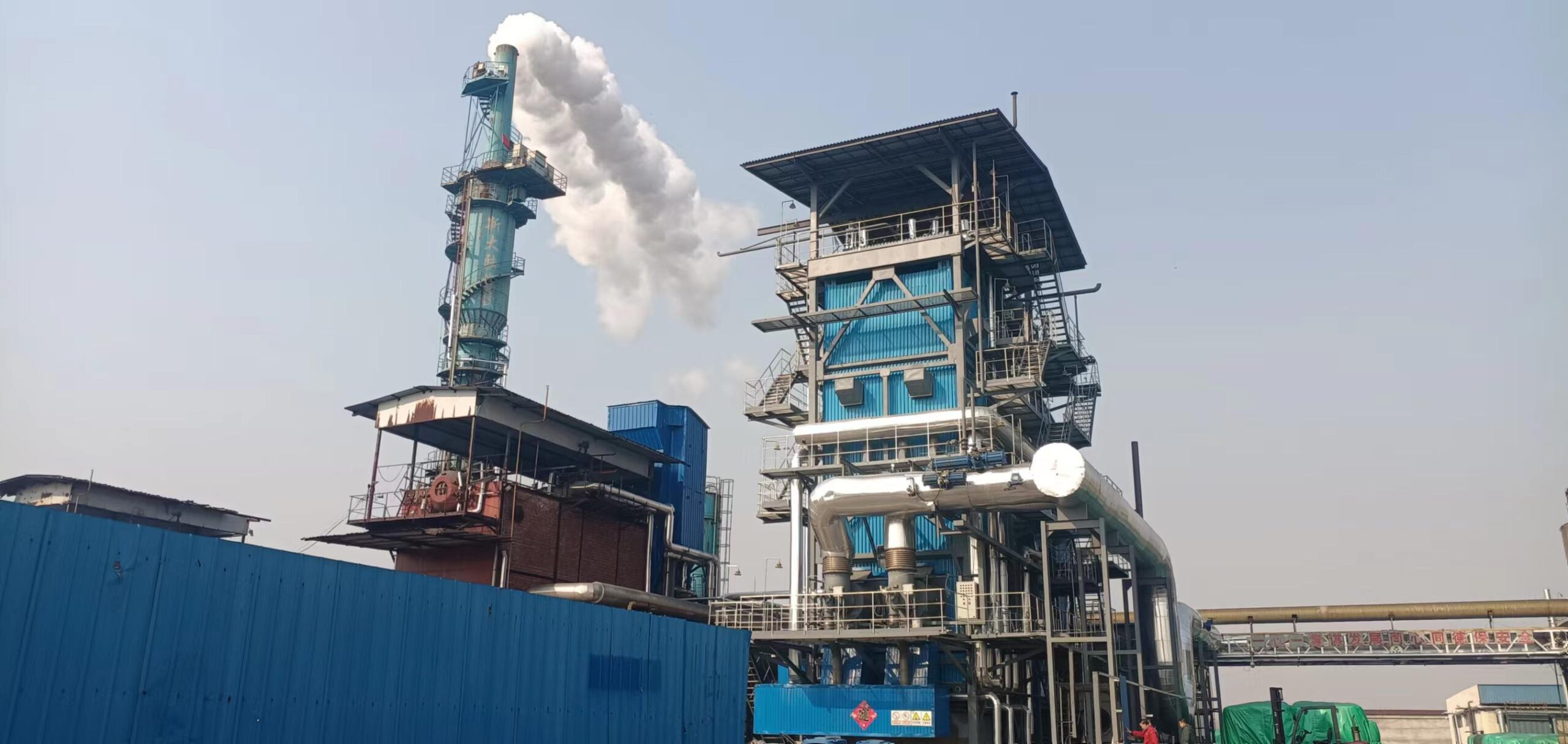
Industrial coal-fired boilers are essential for large-scale power generation, manufacturing, and process heating. These boilers efficiently convert coal’s chemical energy into heat and steam, which is then used for power production or industrial processes. However, the complex structure and operation of these boilers require a deep understanding of their main components to ensure high efficiency, safety, and environmental compliance.
The main components of an industrial coal-fired boiler include the furnace, burner, steam drum, superheater, economizer, air preheater, ash handling system, and flue gas cleaning system. Each component plays a vital role in ensuring efficient fuel combustion, heat transfer, and emission control.
Understanding these components allows industries to optimize boiler performance, reduce emissions, and improve energy efficiency.
Coal-fired boilers only consist of a furnace and steam drum.False
An industrial coal-fired boiler has multiple components, including a superheater, economizer, air preheater, ash handling system, and flue gas cleaning system, ensuring efficient operation.
1. Furnace (Combustion Chamber)
Function:
The furnace is where coal combustion occurs, generating high-temperature heat. It is lined with water-cooled walls to absorb heat and convert water into steam.
✅ Handles coal combustion at high temperatures (900–1600°C).
✅ Designed for efficient air-fuel mixing.
✅ Can be a fluidized bed, stoker-fired, or pulverized coal system.
| Type of Furnace | Fuel Handling | Efficiency (%) | Application |
|---|---|---|---|
| Stoker-Fired | Lump coal, small particles | 75–85% | Small-scale plants |
| Pulverized Coal (PC) | Fine coal powder | 90–95% | Large power plants |
| Fluidized Bed (CFB, BFB) | Low-grade coal, biomass | 85–92% | Industrial heating |
✅ Result: The furnace ensures complete fuel combustion and high energy efficiency.
2. Coal Feeder & Pulverizer System
Function:
The coal feeder regulates the fuel supply, while the pulverizer grinds coal into fine particles for efficient combustion.
✅ Ensures consistent coal feed rate.
✅ Enhances combustion efficiency with fine coal particles.
✅ Reduces unburned carbon in ash.
| Coal Feed System | Function |
|---|---|
| Gravimetric Feeder | Weighs and feeds coal precisely |
| Volumetric Feeder | Measures coal volume flow |
| Pulverizer | Grinds coal into fine powder for efficient burning |
✅ Result: Improves boiler efficiency and fuel utilization.
3. Steam Drum & Water Walls
Function:
The steam drum separates steam from water, while water walls absorb heat from the furnace to produce steam.
✅ Maintains proper steam-water balance.
✅ Prevents boiler overheating.
✅ Optimizes heat transfer.
| Component | Role in Steam Generation |
|---|---|
| Steam Drum | Stores and separates steam |
| Water Walls | Transfers heat to water |
| Downcomers | Circulates water to maintain flow |
✅ Result: Enhances boiler stability and steam quality.
4. Superheater & Reheater
Function:
The superheater raises steam temperature beyond the saturation point, while the reheater improves efficiency by reheating steam after expansion.
✅ Increases steam energy for turbine efficiency.
✅ Reduces moisture content, preventing turbine damage.
✅ Improves overall boiler performance.
| Component | Function |
|---|---|
| Superheater | Raises steam temperature |
| Reheater | Reheats steam for improved efficiency |
✅ Result: Increases power plant efficiency and steam quality.
5. Economizer & Air Preheater
Function:
These components recover waste heat from flue gases to improve efficiency.
✅ Economizer preheats boiler water using flue gas heat.
✅ Air preheater warms incoming air for combustion.
✅ Reduces fuel consumption and emissions.
| Heat Recovery System | Function | Efficiency Improvement |
|---|---|---|
| Economizer | Preheats feedwater | 5–10% |
| Air Preheater | Preheats combustion air | 10–15% |
✅ Result: Maximizes heat recovery and reduces fuel costs.
6. Flue Gas Cleaning System
Function:
Removes harmful pollutants from exhaust gases before releasing them into the atmosphere.
✅ Electrostatic Precipitator (ESP) – Captures fine ash particles.
✅ Flue Gas Desulfurization (FGD) – Reduces SO₂ emissions.
✅ Selective Catalytic Reduction (SCR) – Cuts NOx emissions.
| Pollutant | Control Method | Efficiency (%) |
|---|---|---|
| Particulate Matter | ESP, Baghouse Filter | 99% |
| Sulfur Dioxide (SO₂) | FGD System | 90–95% |
| Nitrogen Oxides (NOx) | SCR System | 70–90% |
✅ Result: Helps industries meet environmental regulations and reduce pollution.
7. Ash Handling System
Function:
Handles solid waste (fly ash & bottom ash) produced after combustion.
✅ Dry and wet ash handling options.
✅ Prevents environmental contamination.
✅ Supports fly ash recycling for cement and construction industries.
| Ash Type | Handling Method |
|---|---|
| Fly Ash | Collected via ESP & bag filters |
| Bottom Ash | Removed from furnace bottom |
✅ Result: Ensures clean operation and waste management compliance.
8. Boiler Control & Automation System
Function:
Optimizes boiler performance, safety, and efficiency through automation.
✅ Monitors fuel, air, and steam parameters.
✅ Automates combustion and load adjustments.
✅ Enhances safety with emergency shutdowns.
| Control System | Function |
|---|---|
| DCS (Distributed Control System) | Controls entire boiler operation |
| PLC (Programmable Logic Controller) | Automates processes |
| SCADA (Supervisory Control and Data Acquisition) | Provides real-time monitoring |
✅ Result: Increases boiler reliability and energy efficiency.
How Does the Coal Combustion Process Work in an Industrial Boiler?
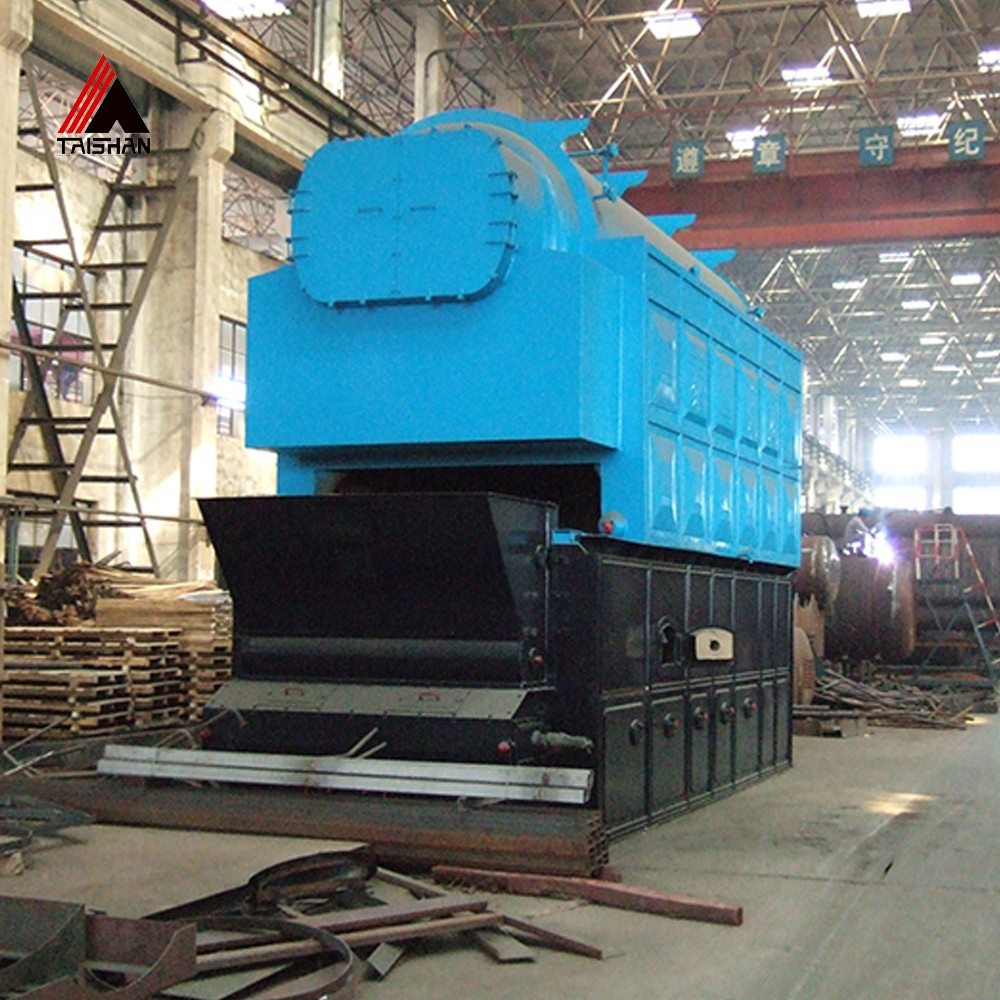
Coal combustion in an industrial boiler is a complex yet highly efficient process that converts chemical energy in coal into thermal energy to produce steam or hot gases for power generation and industrial applications. If the combustion process is inefficient, it can lead to higher fuel costs, increased emissions, and incomplete combustion byproducts, negatively impacting operational performance and environmental compliance. Understanding the combustion process allows industries to optimize fuel usage, improve efficiency, and reduce emissions.
The coal combustion process in an industrial boiler involves fuel preparation, ignition, complete burning, and heat transfer, with critical stages including coal pulverization, air-fuel mixing, combustion, and emission control.
By optimizing these steps, industries can ensure maximum energy extraction, minimal fuel waste, and compliance with environmental regulations.
Coal combustion in an industrial boiler happens instantly without multiple stages.False
The combustion process occurs in multiple stages, including fuel preparation, ignition, complete burning, and post-combustion emissions treatment.
1. Fuel Preparation: Pulverization & Feeding
How it Works:
Before combustion, coal must be processed into fine particles to increase its surface area and improve burning efficiency.
✅ Coal is transported to the boiler from storage silos.
✅ Coal pulverizers grind large coal chunks into fine powder.
✅ Pulverized coal is transported to the burners via a fuel feeder.
| Fuel Preparation Stage | Function | Efficiency Impact |
|---|---|---|
| Coal Feeder | Regulates coal supply to the furnace | Ensures consistent fuel input |
| Pulverizer | Grinds coal into fine powder | Increases combustion efficiency |
| Primary Air Fan | Transports coal powder to the burner | Enhances fuel-air mixing |
✅ Result: Ensures that coal burns completely and efficiently, reducing unburned carbon waste.
2. Ignition & Combustion in the Furnace
How it Works:
Once in the furnace, coal particles ignite and undergo three main stages of combustion:
- Drying & Devolatilization (200–500°C)
- Water and volatile gases escape from coal.
- Coal particles become char (carbon-rich material).
- Char Combustion (800–1600°C)
- The remaining solid carbon reacts with oxygen.
- High heat energy is released.
- Secondary Combustion (Post-combustion zone)
- Remaining gases (CO, hydrocarbons) react further to reduce emissions.
✅ Air supply is carefully controlled to optimize combustion.
✅ Burners distribute fuel evenly for uniform burning.
✅ Furnace walls absorb heat and transfer it to the water.
| Combustion Stage | Reaction Type | Temperature Range (°C) |
|---|---|---|
| Drying & Devolatilization | Release of moisture & gases | 200–500 |
| Char Combustion | Carbon oxidation | 800–1600 |
| Secondary Combustion | Final gas reactions | 1000–1200 |
✅ Result: Converts coal’s chemical energy into heat energy efficiently, ensuring maximum thermal output.
3. Heat Transfer & Steam Generation
How it Works:
Heat generated from coal combustion is transferred to water in the boiler tubes, converting it into steam.
✅ Heat is absorbed by water walls, converting water into saturated steam.
✅ Superheaters further increase steam temperature for high-efficiency turbines.
✅ Heat recovery units (economizers & air preheaters) capture residual heat.
| Heat Transfer Component | Function |
|---|---|
| Furnace Water Walls | Absorb radiant heat to produce steam |
| Superheater | Increases steam temperature for power generation |
| Economizer | Preheats water using flue gas heat |
| Air Preheater | Warms incoming air for better combustion |
✅ Result: Improves overall boiler efficiency by recycling waste heat and reducing fuel consumption.
4. Flue Gas Treatment & Emission Control
How it Works:
After combustion, the remaining gases and particulates must be cleaned before being released into the atmosphere to meet environmental standards.
Electrostatic Precipitators (ESP) or Bag Filters remove fly ash.
Flue Gas Desulfurization (FGD) systems capture sulfur dioxide (SO₂).
Selective Catalytic Reduction (SCR) reduces nitrogen oxides (NOx).
| Pollutant | Control Method | Efficiency (%) |
|---|---|---|
| Particulate Matter (PM) | ESP, Bag Filters | 99% |
| Sulfur Dioxide (SO₂) | FGD Scrubbers | 90–95% |
| Nitrogen Oxides (NOx) | SCR System | 70–90% |
✅ Result: Ensures cleaner emissions, compliance with environmental laws, and reduced air pollution.
5. Ash Handling & Waste Management
How it Works:
The combustion process produces solid waste (ash), which must be efficiently removed and managed.
Bottom Ash (heavier particles) is collected from the furnace bottom.
Fly Ash (fine particles) is captured by air pollution control systems.
Ash is recycled for cement production or landfilling.
| Ash Type | Handling Method | Common Use |
|---|---|---|
| Bottom Ash | Mechanical scrapers, water quenching | Road construction |
| Fly Ash | ESP, Bag Filters | Cement manufacturing |
Result: Reduces environmental impact and promotes sustainable waste utilization.
6. Control & Optimization of the Combustion Process
How it Works:
Advanced automation systems optimize the entire combustion process for maximum efficiency and safety.
Real-time monitoring of fuel, air, and steam parameters.
Automated burner control adjusts air-fuel ratio for complete combustion.
Efficiency monitoring reduces fuel waste and operating costs.
| Automation System | Function |
|---|---|
| Distributed Control System (DCS) | Manages boiler operations |
| Programmable Logic Controller (PLC) | Adjusts combustion parameters |
| Supervisory Control and Data Acquisition (SCADA) | Provides real-time performance data |
Result: Ensures stable, efficient, and safe boiler operation.
What Types of Coal Are Used in Industrial Coal-Fired Boilers?

Industrial coal-fired boilers require different types of coal depending on boiler design, combustion technology, efficiency goals, and environmental regulations. Choosing the wrong coal type can lead to inefficient combustion, excessive emissions, and higher operational costs. Understanding the properties of different coal types helps industries maximize energy output, reduce waste, and ensure compliance with environmental standards.
The main types of coal used in industrial boilers are anthracite, bituminous, sub-bituminous, and lignite. Each type differs in carbon content, moisture level, heating value, and emissions characteristics, affecting combustion efficiency and boiler performance.
By selecting the right coal type, industries can achieve higher energy efficiency, lower emissions, and better cost-effectiveness in their steam and power generation processes.
All types of coal provide the same energy output in industrial boilers.False
Different coal types vary in calorific value, carbon content, and combustion efficiency, affecting their energy output.
1. Classification of Coal Based on Carbon Content and Energy Value
Coal is classified into four main types based on its carbon content, moisture, and heating value.
| Coal Type | Carbon Content (%) | Moisture (%) | Calorific Value (MJ/kg) | Ash Content (%) | Sulfur Content (%) |
|---|---|---|---|---|---|
| Anthracite | 85–97 | <10 | 30–35 | 5–15 | 0.4–1 |
| Bituminous | 45–85 | 5–15 | 24–30 | 10–20 | 0.5–3 |
| Sub-bituminous | 35–45 | 10–25 | 18–24 | 5–10 | 0.2–1.5 |
| Lignite | 25–35 | 25–45 | 10–18 | 5–15 | 0.2–2 |
✅ Higher carbon content = More energy per kilogram of coal
✅ Higher moisture content = Lower heating efficiency
✅ Lower sulfur content = Reduced SO₂ emissions
2. Anthracite Coal: The High-Efficiency Fuel
Key Characteristics:
Highest carbon content (85–97%) → Produces maximum heat
Lowest moisture and volatile content → Burns cleanly
High calorific value (30–35 MJ/kg) → Ideal for high-efficiency boilers
Low sulfur content (0.4–1%) → Minimizes SO₂ emissions
Common Applications:
Power plants requiring ultra-high efficiency
Industrial processes needing stable heat supply
Steam generation in industries with strict emission norms
| Pros | Cons |
|---|---|
| High energy output per ton | More expensive than other coal types |
| Low emissions and low ash content | Requires high-temperature combustion |
| Long burn time, stable heat output | Limited availability globally |
Best for: High-efficiency industrial boilers, steel plants, and metallurgical applications.
3. Bituminous Coal: The Most Common Industrial Fuel
Key Characteristics:
Moderate to high carbon content (45–85%) → Good energy efficiency
Medium moisture and volatile matter → Easy to ignite
Calorific value (24–30 MJ/kg) → Reliable for steam production
Sulfur content varies (0.5–3%) → Requires emission control in high-sulfur variants
Common Applications:
✅ Industrial boilers in power plants, cement, and chemical industries
✅ Cogeneration systems for steam and electricity production
✅ Large-scale heating applications
| Pros | Cons |
|---|---|
| High availability and lower cost | Moderate emissions require control measures |
| Easy ignition and stable combustion | Higher ash production compared to anthracite |
| Works well in a variety of boiler designs | Some types contain high sulfur levels |
✅ Best for: General industrial applications requiring moderate to high energy output.
4. Sub-bituminous Coal: The Cost-Effective Option
Key Characteristics:
Lower carbon content (35–45%) → Less efficient than bituminous coal
Higher moisture content (10–25%) → Reduces combustion efficiency
Calorific value (18–24 MJ/kg) → Moderate energy output
Low sulfur content (0.2–1.5%) → Environmentally friendly
Common Applications:
✅ Power generation in low-cost fuel markets
✅ District heating and steam production
✅ Cement and paper manufacturing industries
| Pros | Cons |
|---|---|
| Lower cost than bituminous coal | Lower energy output |
| Lower sulfur content reduces SO₂ emissions | Requires drying before combustion |
| Readily available in many regions | Less efficient in high-temperature boilers |
✅ Best for: Industries prioritizing cost savings over maximum efficiency.
5. Lignite Coal: The Low-Rank Fuel Option
Key Characteristics:
Lowest carbon content (25–35%) → Least efficient fuel
Very high moisture content (25–45%) → Requires drying for effective combustion
Calorific value (10–18 MJ/kg) → Low energy output per kilogram
Sulfur content (0.2–2%) → Varies depending on coal source
Common Applications:
✅ Boilers with fluidized bed combustion (FBC) technology
✅ Power plants in regions with abundant lignite reserves
✅ Low-cost industrial steam generation
| Pros | Cons |
|---|---|
| Most affordable coal type | Requires drying before use |
| Abundant in many countries | Produces more ash and emissions |
| Can be used in specialized FBC boilers | Less energy-efficient than other coal types |
✅ Best for: Industries with access to cheap lignite and fluidized bed boiler technology.
6. Choosing the Right Coal for Your Industrial Boiler
Key Factors to Consider:
| Factor | Best Coal Type |
|---|---|
| Maximum heat output & efficiency | Anthracite |
| Balanced cost & efficiency | Bituminous |
| Cost savings & moderate efficiency | Sub-bituminous |
| Lowest fuel cost, but lowest efficiency | Lignite |
| Low emissions requirement | Anthracite & low-sulfur bituminous |
| High availability & affordability | Sub-bituminous & lignite |
✅ Anthracite: Best for industries needing ultra-high efficiency.
✅ Bituminous: Ideal for general industrial use.
✅ Sub-bituminous: Cost-effective alternative for steam generation.
✅ Lignite: Suitable for low-cost, large-scale energy production.
How Do Modern Industrial Coal-Fired Boilers Improve Efficiency and Reduce Emissions?
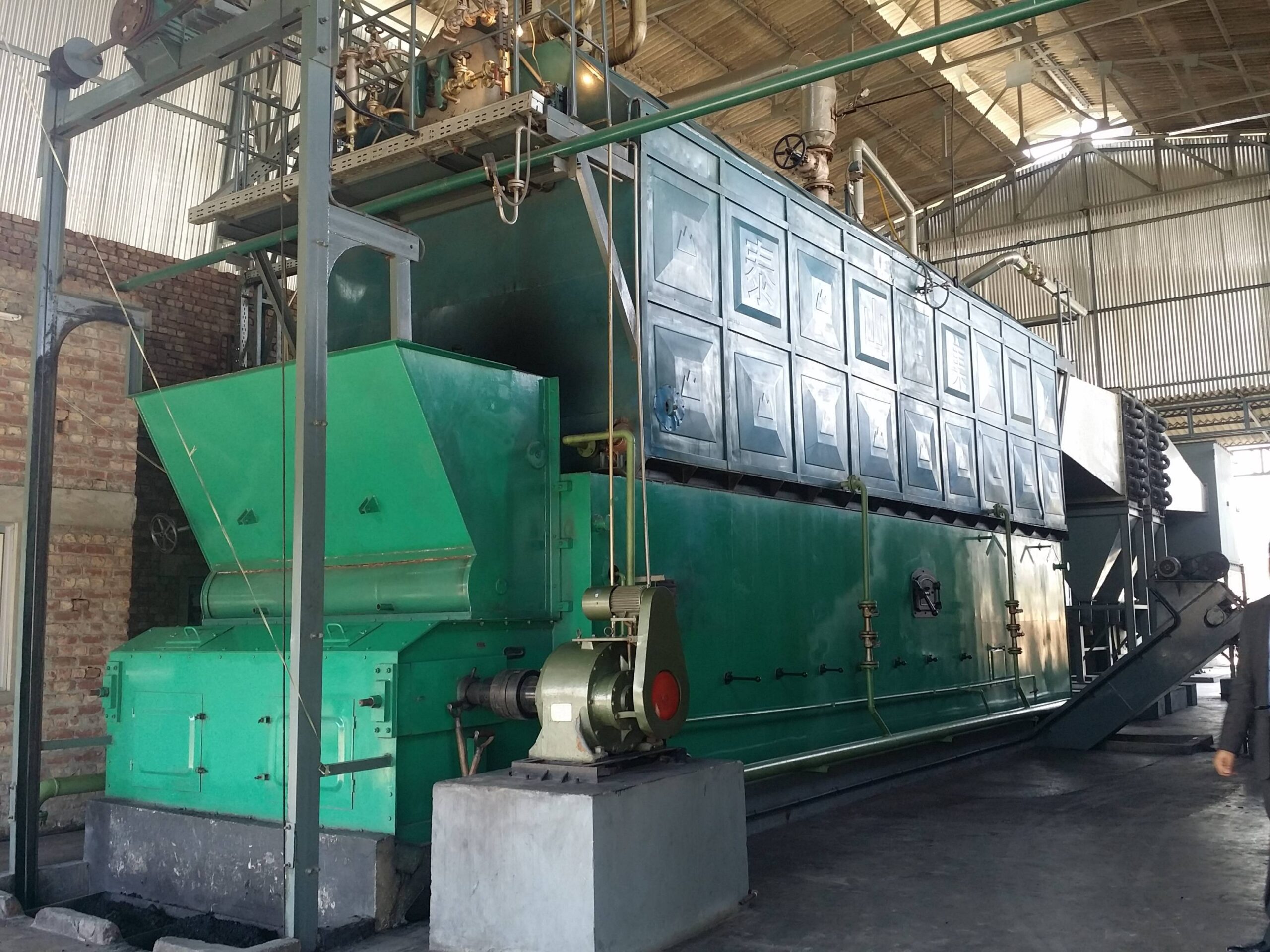
Industrial coal-fired boilers have evolved significantly to meet the growing demands for higher energy efficiency and lower environmental impact. Traditional coal combustion methods led to high fuel consumption, excessive greenhouse gas emissions, and regulatory compliance challenges. Modern advancements have introduced cleaner combustion technologies, waste heat recovery systems, and sophisticated emission control mechanisms.
Modern industrial coal-fired boilers achieve improved efficiency through advanced combustion technologies, better fuel utilization, and heat recovery systems while reducing emissions using pollution control equipment like flue gas desulfurization (FGD), selective catalytic reduction (SCR), and electrostatic precipitators (ESP).
By integrating cutting-edge thermal efficiency measures and strict emission controls, industries can now reduce fuel costs, optimize energy output, and comply with stringent environmental regulations.
Modern coal-fired boilers cannot achieve significant emission reductions.False
Advanced emission control technologies like FGD, SCR, and ESP effectively minimize pollutants from coal combustion.
1. Key Efficiency Improvements in Modern Industrial Coal-Fired Boilers
| Efficiency Improvement Method | How It Works | Efficiency Gain (%) |
|---|---|---|
| Supercritical & Ultra-Supercritical Boilers | Operates at higher pressure and temperature to increase steam efficiency | 8–12% |
| Circulating Fluidized Bed (CFB) Combustion | Enhances fuel mixing and combustion efficiency with lower emissions | 5–10% |
| Waste Heat Recovery (WHR) Systems | Captures and reuses exhaust heat to preheat feedwater | 3–8% |
| Coal Drying Technology | Reduces coal moisture content to improve combustion efficiency | 2–5% |
| Advanced Pulverized Coal (APC) Burners | Achieves more complete combustion, reducing unburned carbon | 5–8% |
✅ Supercritical & ultra-supercritical steam cycles can reach 45–50% efficiency, compared to 30–35% for conventional coal boilers.
✅ Waste heat recovery and better fuel preparation significantly lower energy waste.
2. Advanced Combustion Technologies for Higher Efficiency
A. Supercritical & Ultra-Supercritical Boilers
🔥 Higher temperature and pressure → More energy extraction from coal
⚡ Reduced fuel consumption per unit of electricity
📉 Lower CO₂ emissions compared to conventional boilers
| Boiler Type | Steam Temperature (°C) | Efficiency (%) |
|---|---|---|
| Subcritical | 500–540 | 30–35 |
| Supercritical | 540–600 | 40–45 |
| Ultra-Supercritical | 600–700 | 45–50 |
✅ Ultra-supercritical boilers achieve the highest efficiency and lowest emissions in coal-fired power plants.
B. Circulating Fluidized Bed (CFB) Combustion
🌍 Low-emission combustion by operating at lower temperatures (800–900°C)
🔥 High fuel flexibility → Can burn low-grade coal, biomass, and waste fuels
📉 Lower NOₓ and SO₂ emissions due to in-bed limestone desulfurization
| Feature | CFB Combustion | Conventional Pulverized Coal (PC) Combustion |
|---|---|---|
| Operating Temperature (°C) | 800–900 | 1300–1600 |
| NOₓ Emissions (mg/Nm³) | < 200 | 500–1000 |
| Fuel Flexibility | High | Low |
| Efficiency | 40–45% | 35–40% |
✅ CFB boilers reduce emissions by up to 50% compared to traditional pulverized coal systems.
3. Cutting-Edge Emission Control Technologies
A. Flue Gas Desulfurization (FGD) for SO₂ Reduction
🔽 Removes 90–98% of sulfur dioxide (SO₂)
⚗️ Uses limestone or lime slurry to neutralize sulfur
🌍 Ensures compliance with strict air pollution regulations
| FGD Type | SO₂ Removal Efficiency (%) |
|---|---|
| Wet FGD (Limestone-Based) | 90–98 |
| Dry FGD (Spray Dryer Absorber) | 80–90 |
| CFB Limestone Injection | 60–80 |
✅ Wet FGD is the most efficient and widely used method for reducing SO₂ emissions.
B. Selective Catalytic Reduction (SCR) for NOₓ Control
🔽 Reduces 85–95% of nitrogen oxides (NOₓ)
⚗️ Uses ammonia (NH₃) and catalysts to convert NOₓ into harmless nitrogen and water
📉 Prevents acid rain and smog formation
| SCR Type | NOₓ Removal Efficiency (%) |
|---|---|
| High-Dust SCR (Pre-ESP) | 85–95 |
| Low-Dust SCR (Post-ESP) | 80–90 |
| Ammonia Injection (SNCR) | 30–50 |
✅ SCR technology is essential for reducing NOₓ emissions in coal-fired plants.
C. Electrostatic Precipitators (ESP) & Bag Filters for Particulate Control
🌍 Captures 99.9% of fly ash and fine particles
💨 Ensures cleaner air and reduced health risks
⚡ Uses high-voltage electric fields or fabric filters to trap particulates
| Particulate Control Method | Efficiency (%) |
|---|---|
| Electrostatic Precipitator (ESP) | 99.5–99.9 |
| Baghouse Filter | 99.9+ |
✅ ESP and bag filters prevent air pollution and ensure compliance with environmental laws.
4. Digital Automation & Smart Boiler Optimization
📊 AI-based combustion control systems → Optimize fuel-air ratio for maximum efficiency
🔥 Real-time monitoring → Detect inefficiencies and reduce unburned carbon losses
⚡ Predictive maintenance → Prevent failures and reduce downtime
| Automation Feature | Impact on Boiler Performance |
|---|---|
| AI-Powered Combustion Control | Reduces fuel wastage by 5–10% |
| Smart Soot Blowing System | Improves heat transfer efficiency |
| Online Emission Monitoring | Ensures regulatory compliance |
✅ Automated control systems enhance efficiency while reducing emissions.
What Are the Key Maintenance Practices for an Industrial Coal-Fired Boiler?
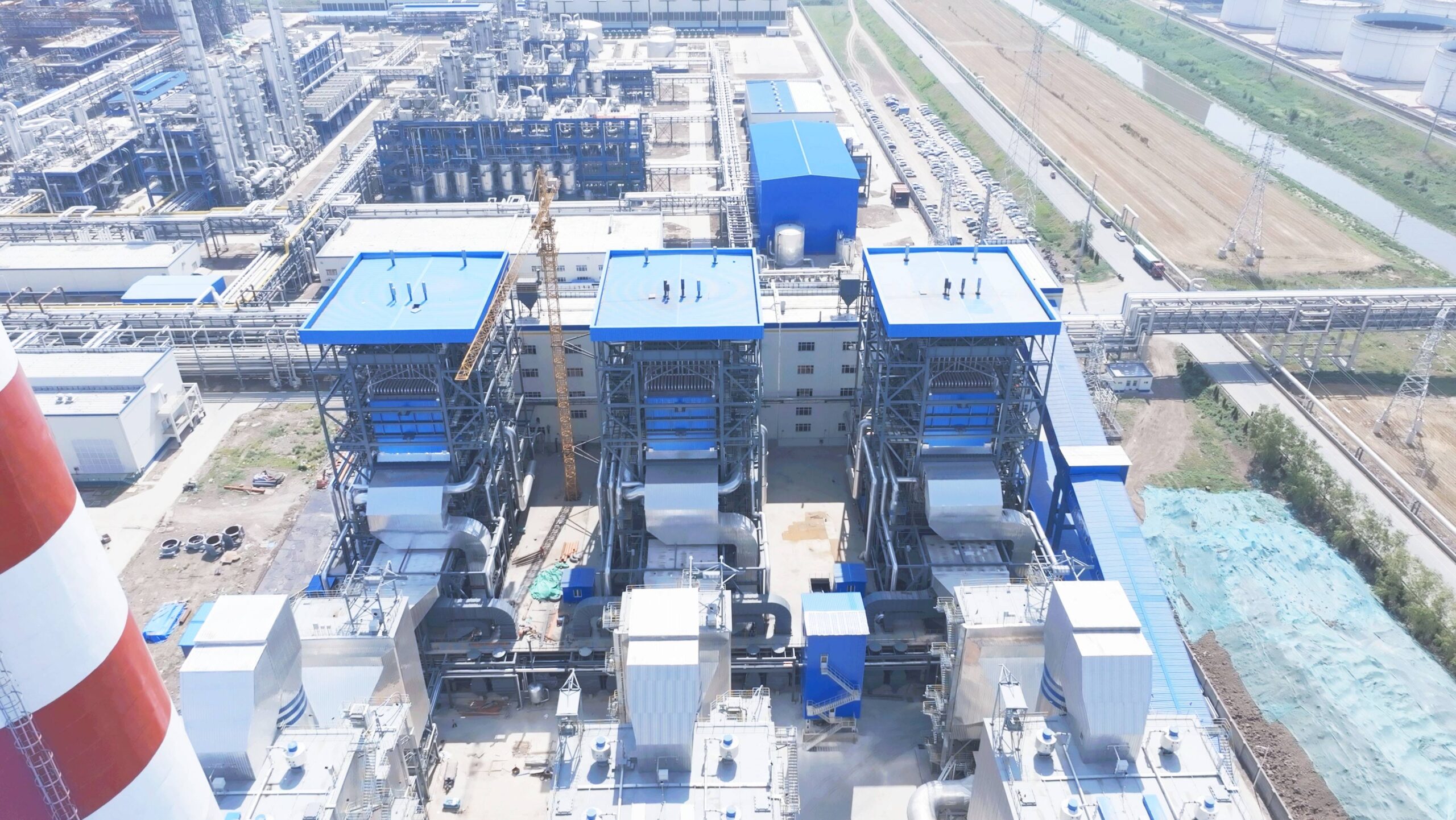
Industrial coal-fired boilers operate under extreme conditions, requiring regular maintenance to ensure efficiency, safety, and compliance with environmental regulations. Without proper upkeep, these boilers face issues like reduced efficiency, increased fuel consumption, unexpected breakdowns, and excessive emissions. Implementing a structured maintenance plan prevents costly failures and extends equipment lifespan.
The key maintenance practices for an industrial coal-fired boiler include regular inspections, cleaning of heat transfer surfaces, monitoring of fuel quality, optimizing combustion efficiency, maintaining emission control systems, and ensuring proper water treatment. A proactive maintenance approach reduces downtime, improves efficiency, and enhances safety.
Neglecting maintenance can lead to frequent breakdowns, regulatory non-compliance, and increased operational costs. By following best practices, industries can enhance boiler performance and achieve long-term operational reliability.
Industrial coal-fired boilers do not require regular maintenance.False
Regular maintenance is essential to prevent breakdowns, ensure efficiency, and comply with environmental regulations.
1. Routine Inspection and Preventive Maintenance Checklist
Regular inspections help detect potential failures before they escalate. A well-structured preventive maintenance (PM) schedule includes daily, weekly, monthly, and annual checks.
A. Daily Maintenance Tasks
✅ Monitor pressure and temperature levels to detect anomalies
✅ Check fuel feed system for blockages and wear
✅ Inspect combustion efficiency using flue gas analysis
✅ Observe boiler flame characteristics for proper combustion
✅ Monitor water levels and feedwater pumps to prevent overheating
B. Weekly Maintenance Tasks
✅ Inspect air and fuel ratio for optimized combustion
✅ Check and clean soot blowers to prevent fouling
✅ Ensure ash handling systems are functioning
✅ Test safety valves and pressure relief systems
C. Monthly Maintenance Tasks
✅ Inspect refractory lining for cracks or damage
✅ Examine burner nozzles and coal pulverizers for wear
✅ Perform a deep clean of heat exchanger surfaces
✅ Lubricate moving parts like fans, motors, and bearings
D. Annual Maintenance Tasks
✅ Conduct a full boiler shutdown inspection
✅ Perform ultrasonic thickness testing on pressure parts
✅ Inspect and overhaul emission control equipment
✅ Calibrate sensors, gauges, and safety systems
| Maintenance Task | Frequency | Key Benefits |
|---|---|---|
| Flue gas analysis | Daily | Optimizes combustion efficiency |
| Soot blower operation | Weekly | Prevents heat exchanger fouling |
| Burner nozzle cleaning | Monthly | Ensures complete fuel combustion |
| Ultrasonic thickness testing | Annually | Detects pressure part corrosion |
✅ Following a structured maintenance schedule reduces unplanned downtime and extends boiler life.
2. Cleaning and Optimization of Heat Transfer Surfaces
Over time, heat exchanger surfaces accumulate soot, slag, and ash, reducing thermal efficiency. Regular cleaning prevents:
❌ Reduced heat transfer rates → Higher fuel consumption
❌ Increased flue gas temperatures → Wasted energy
❌ Corrosion and material degradation
A. Soot Blowing & Heat Exchanger Cleaning
🔥 Soot blowers use steam or compressed air to remove deposits
🔧 Manual brushing & chemical cleaning improve heat exchanger performance
📉 Reduces fuel consumption by 5–10%
| Cleaning Method | Effectiveness |
|---|---|
| Steam soot blowing | Medium |
| Sonic soot cleaning | High |
| Chemical descaling | Very High |
✅ Optimized heat transfer surfaces ensure consistent performance and fuel savings.
3. Fuel Quality and Combustion System Maintenance
Poor fuel quality leads to incomplete combustion, excessive slagging, and higher emissions.
A. Coal Quality Monitoring
✅ Analyze coal for moisture, ash content, and calorific value
✅ Ensure proper coal storage to prevent excessive moisture absorption
✅ Use pre-drying techniques to improve combustion efficiency
B. Burner & Pulverizer Maintenance
✅ Inspect and replace worn burner nozzles
✅ Ensure coal pulverizers grind coal to optimal particle size
✅ Adjust air-fuel ratio for complete combustion
| Coal Property | Impact on Boiler Performance |
|---|---|
| High moisture content | Reduces combustion efficiency |
| Excessive ash content | Increases fouling and slagging |
| Low calorific value | Requires more fuel for the same heat output |
✅ Proper fuel handling and burner maintenance ensure maximum efficiency and lower emissions.
4. Water Treatment and Boiler Feedwater Maintenance
Water quality is crucial for preventing scaling, corrosion, and efficiency loss.
A. Key Water Treatment Steps
✅ Deaeration: Removes dissolved oxygen to prevent corrosion
✅ Chemical Treatment: Controls pH, alkalinity, and hardness
✅ Blowdown Management: Removes impurities and maintains water quality
| Water Quality Issue | Effect on Boiler |
|---|---|
| Hardness (Ca, Mg) | Causes scale buildup |
| Dissolved oxygen | Leads to corrosion |
| High TDS (Total Dissolved Solids) | Increases boiler blowdown losses |
✅ Proper water treatment prevents costly damage and extends boiler life.
5. Emission Control System Maintenance
Environmental compliance requires regular maintenance of pollution control equipment.
A. Flue Gas Desulfurization (FGD) System
✅ Check limestone slurry concentration for efficient SO₂ removal
✅ Inspect spray nozzles & pumps to prevent blockages
✅ Ensure waste disposal system functions properly
B. Selective Catalytic Reduction (SCR) System
✅ Monitor ammonia injection system for NOₓ reduction
✅ Replace catalyst layers as needed
C. Electrostatic Precipitators (ESP) & Bag Filters
✅ Inspect electrodes and rapping systems for efficient dust collection
✅ Replace damaged filter bags to maintain particle removal efficiency
| Emission Control Equipment | Key Maintenance Actions |
|---|---|
| Flue Gas Desulfurization (FGD) | Clean spray nozzles, maintain slurry levels |
| Selective Catalytic Reduction (SCR) | Replace catalyst elements, check ammonia system |
| Electrostatic Precipitators (ESP) | Inspect electrodes, clean discharge plates |
✅ Well-maintained emission control systems keep the plant within regulatory limits.
What Industries Benefit the Most from Using Coal-Fired Boilers?

Coal-fired boilers remain an essential energy source for many industries due to their high efficiency, cost-effectiveness, and ability to provide a stable heat supply. Industries that require high-temperature steam, large-scale heating, and continuous energy output rely on these boilers to support their operations. Without a reliable energy source, these industries would face higher operational costs, production slowdowns, and energy supply challenges.
Industries that benefit the most from using coal-fired boilers include power generation, cement manufacturing, steel and metallurgy, chemical processing, food production, textile manufacturing, paper and pulp production, and district heating systems. These industries rely on coal-fired boilers for continuous high-temperature heat and steam, which are essential for various manufacturing and processing operations.
As industries seek energy security, cost efficiency, and operational reliability, coal-fired boilers continue to be a critical energy solution, particularly in regions with abundant coal resources and limited access to alternative energy sources.
Coal-fired boilers are not used in heavy industries.False
Coal-fired boilers are widely used in industries such as power generation, steel manufacturing, cement production, and chemical processing, where high-temperature steam and heat are essential.
1. Power Generation Industry
Coal-fired boilers are a primary energy source for electricity production in many countries. They are used in thermal power plants, where coal is burned to generate steam, which drives turbines to produce electricity.
Why Power Plants Use Coal-Fired Boilers?
✅ High energy density – Coal provides stable and continuous energy output
✅ Cost-effectiveness – Lower operational costs compared to alternative fuels
✅ Energy security – Readily available coal reserves ensure long-term supply
Coal Usage in Power Generation
| Energy Source | Share in Global Power Generation (%) | Advantages |
|---|---|---|
| Coal | 35% | High reliability, cost-effective |
| Natural Gas | 23% | Lower emissions, flexible power supply |
| Renewables | 29% | Sustainable, but intermittent |
| Nuclear | 10% | Low emissions, high efficiency |
✅ Coal-fired boilers play a critical role in providing stable and affordable electricity, especially in regions with limited renewable energy infrastructure.
2. Steel and Metallurgy Industry
The steel industry requires high-temperature heat for smelting, refining, and rolling processes. Coal-fired boilers provide a continuous supply of steam and process heat, making them essential for operations.
Applications in Steel Production
✅ Blast furnaces – Coal-fired boilers generate the heat needed for iron ore smelting
✅ Rolling mills – Steam is used in metal shaping and treatment
✅ Coke production – Coal is processed into coke, a crucial material in steelmaking
| Process | Role of Coal-Fired Boilers |
|---|---|
| Iron ore smelting | Provides high-temperature heat for molten metal production |
| Metal rolling | Supplies steam for shaping and processing steel sheets |
| Coke oven heating | Converts coal into coke for blast furnace fuel |
✅ Steel and metallurgy industries rely on coal-fired boilers for consistent high-heat supply, ensuring uninterrupted production.
3. Cement Manufacturing Industry
Cement production requires extremely high temperatures (up to 1,450°C) to convert raw materials into clinker. Coal-fired boilers supply process heat for kilns, dryers, and calcination processes.
Why Cement Plants Use Coal-Fired Boilers?
✅ Reliable heat source – Ensures stable clinker production
✅ Cost-effective fuel – Reduces production costs compared to alternative fuels
✅ High combustion efficiency – Provides consistent temperature control
Coal-Fired Boiler Applications in Cement Plants
| Cement Process | Role of Coal-Fired Boilers |
|---|---|
| Kiln heating | Provides heat for raw material transformation |
| Clinker production | Supports calcination at high temperatures |
| Preheating and drying | Supplies steam for material preparation |
✅ Coal-fired boilers help maintain high efficiency and cost control in cement production.
4. Chemical and Petrochemical Industry
The chemical industry requires precise temperature control for reactions, distillation, and refining. Coal-fired boilers provide high-pressure steam and thermal energy for various processes.
Key Applications in Chemical Processing
✅ Petrochemical refining – Converts crude oil into fuels and chemicals
✅ Fertilizer production – Supplies heat for ammonia and urea synthesis
✅ Pharmaceuticals – Supports chemical synthesis and sterilization
| Chemical Process | Coal-Fired Boiler Function |
|---|---|
| Steam distillation | Provides heat for chemical separation |
| Polymerization | Supplies controlled temperature for plastic production |
| Refining and extraction | Ensures high-efficiency thermal processing |
✅ Chemical industries benefit from the stable and high-temperature steam output of coal-fired boilers.
5. Pulp and Paper Industry
Coal-fired boilers are widely used in paper mills for pulping, drying, and steam generation. They provide continuous heat for chemical pulping, paper drying, and energy production.
Applications in Paper Production
✅ Chemical pulping – Supports kraft and sulfite pulping processes
✅ Paper drying – Provides steam for drying machines
✅ Coating and finishing – Controls temperature in paper treatment
| Paper Manufacturing Step | Coal-Fired Boiler Role |
|---|---|
| Pulping | Supplies heat for fiber breakdown |
| Drying | Provides steam for moisture removal |
| Printing and coating | Controls temperature for final processing |
✅ Paper mills benefit from the high-efficiency steam generation of coal-fired boilers.
6. Textile and Food Processing Industries
Textile and food industries use coal-fired boilers for drying, heating, and processing applications.
Textile Industry Applications
✅ Fabric dyeing and printing – Uses steam for color fixation
✅ Textile finishing – Provides controlled temperature for fabric treatment
Food Processing Applications
✅ Sterilization – Ensures food safety through steam treatment
✅ Baking and drying – Supplies heat for food dehydration
| Industry | Coal-Fired Boiler Application |
|---|---|
| Textile | Dyeing, printing, fabric finishing |
| Food Processing | Sterilization, drying, pasteurization |
✅ Coal-fired boilers help maintain cost-effective and consistent heating in food and textile industries.
7. District Heating and Residential Applications
Coal-fired boilers provide centralized heating for urban areas, hospitals, and institutions.
Benefits for District Heating
✅ Reliable winter heating – Supplies steam for homes and offices
✅ Cost savings – Reduces heating expenses compared to oil or gas
✅ Energy independence – Utilizes local coal resources
✅ District heating systems benefit from the large-scale efficiency of coal-fired boilers.
🔍 Conclusion
Industrial coal-fired boilers remain a reliable and cost-effective energy solution for many industries. With advancements in combustion technology and emission control, modern coal-fired boilers can achieve higher efficiency while meeting environmental regulations. By understanding their working principles, fuel options, and maintenance strategies, industries can optimize performance, reduce operational costs, and ensure long-term sustainability.
📞 Contact Us
💡 Looking for expert guidance on industrial coal-fired boilers? Whether you need installation support, efficiency upgrades, or compliance solutions, our team is here to help!
🔹 Get in touch today and enhance your industrial energy solutions! 🚀
FAQ
What is an industrial coal-fired boiler?
An industrial coal-fired boiler is a steam or hot water system that burns coal to generate heat energy for manufacturing, power generation, and other industrial applications.
How does an industrial coal-fired boiler work?
A coal-fired boiler burns coal in a combustion chamber, heating water in a heat exchanger to produce steam or hot water for industrial use, with exhaust gases managed through flue gas treatment systems.
What are the main components of a coal-fired boiler?
Key components include the combustion chamber, coal feeding system, heat exchanger, flue gas cleaning system, and an ash removal system.
What are the advantages of coal-fired boilers?
Coal-fired boilers offer high energy efficiency, cost-effectiveness, and reliable long-term operation, making them suitable for large-scale industrial processes.
What are the environmental concerns of coal-fired boilers?
Coal combustion releases emissions like CO₂, SO₂, and particulate matter, requiring modern boilers to use pollution control technologies such as scrubbers and electrostatic precipitators.
References
- Coal-Fired Boiler Basics – https://www.energy.gov
- How Coal Combustion Works in Boilers – https://www.sciencedirect.com
- Efficiency of Industrial Coal Boilers – https://www.researchgate.net
- Coal Boiler Emission Control – https://www.epa.gov
- Industrial Uses of Coal Boilers – https://www.bioenergyconsult.com
- Coal vs. Biomass Boilers – https://www.mdpi.com
- Flue Gas Treatment in Coal Boilers – https://www.energysavingtrust.org.uk
- Types of Coal Used in Boilers – https://www.iea.org
- Future of Industrial Coal Boilers – https://www.automation.com
- Coal Boiler Regulations and Standards – https://www.sciencedirect.com

